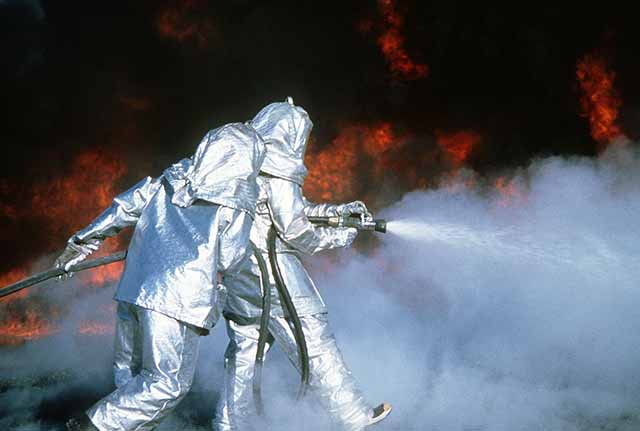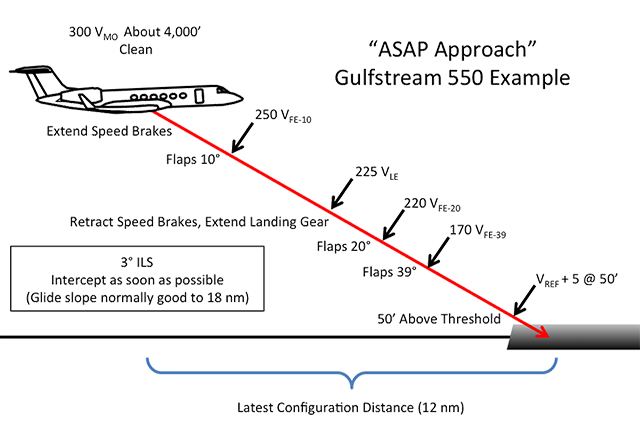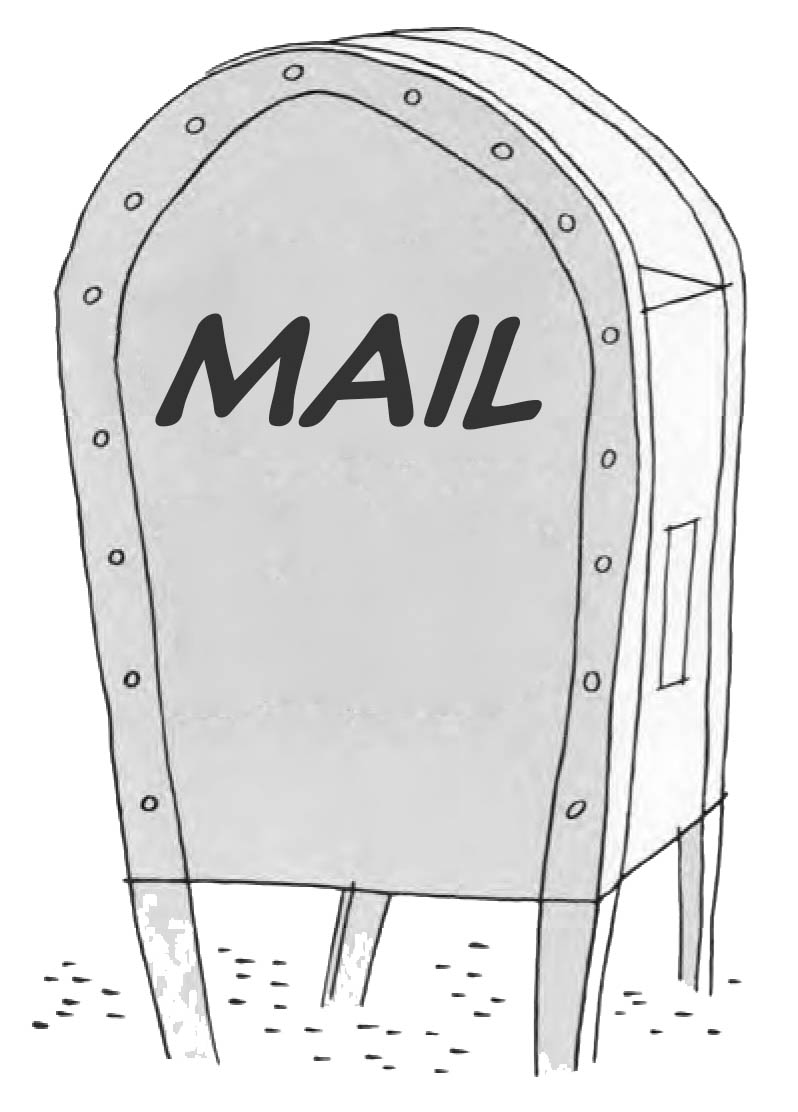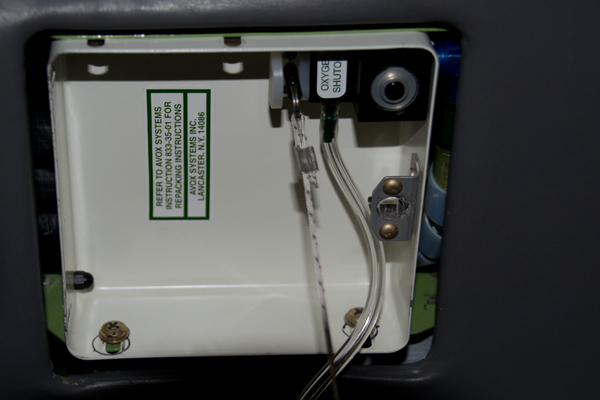After a few cabin fires in my Boeing 707 squadron, we came up with this bit of wisdom: If you don't put a cabin fire out in eight minutes or less, you probably won't. If you are on fire and don't land the airplane in fifteen minutes or less, you probably won't. Now you will see that in just about so many words in AC 120-80 In-flight Fires, §14.1. That advisory circular, by the way, was updated in 2023 and is well worth the read.
— James Albright
1
A brief history lesson
| Date | Location | Aircraft Type | Time to Become Non-Survivable (Minutes) | (see:) |
| 07-26-1969 | Biskra, Algeria | Caravelle | 26 | Air Algerie 73 |
| 07-11-1973 | B-707 | Paris, France | 7 | Varig 820 |
| 11-03-1973 | Boston, USA | B-707 | 35 | Pan Am 160 |
| 11-26-1979 | Jeddah, Saudi Arabia | B-707 | 17 | Pakistan International Airlines 740 |
| 06-02-1983 | Cincinnati, USA | DC-9 | 19 | Air Canada 797 |
| 11-28-1987 | Mauritius, Indian Ocean | B-747 | 19 | SAA 295 |
| 09-02-1998 | Nova Scotia, Canada | MD-11 | 16 | Swissair 111 |
Source: AC 120-80A, Appendix 3.
OLD IDEA: "Fight the fire, land if you have to."
This philosophy was the rule of the skies until an Air Canada DC-9 changed the way we think about cabin fires forever. In 1983 the captain of Air Canada Flight 797 delayed the decision to land for six minutes while his crew fought a lavatory fire. They were airborne for nearly 20 minutes before he managed to get the aircraft on the ground. After the exits were opened the aircraft burst into flames, killing 23 passengers as the remaining 18 passengers and 5 crewmembers made it out.
NEWER IDEA: "Point the airplane to a landable surface and fight the fire."
Fifteen years later, the crew of Swissair 111, en route from Boston to Geneva, detected what they thought was air conditioning smoke and elected almost immediately to return to Boston, less than four minutes after first detecting the odor. A minute later they opted for the closest airport, Halifax. In the next fifteen minutes, however, they declined direct routing to allow time to run checklists, prepare for the landing, and to allow for fuel dumping. After multiple aircraft systems began to fail the crew declared an emergency and requested an immediate landing. They impacted the water six minutes later, nearly 21 minutes after first detecting the odor, which turned out to be an electrical fire. All 243 on board perished.
The statistics are clear: If you don't put a cabin fire out in eight minutes or less, it will probably become uncontrollable. If you have an uncontrollable cabin fire and don't land in fifteen minutes or less, you may lose the airplane and all on board. Make no mistake about it: if you have a cabin fire you are in a battle against an enemy that has time on its side.
NEW IDEA: "Point the airplane to a landable surface, put the airplane on the ground as soon as possible and fight the fire if you can."
The key to surviving a cabin fire is speed: You should know how to fly your airplane's fastest possible approach and landing. Doing this requires practice and knowing exactly what to do without reference to checklists.
2
Subtle causes of in-flight fires
- Wiring Failures. A majority of hidden in-flight fires are the result of electrical arcs along wire bundles. In most cases, the electrical arc acts as the initiating event, igniting other surrounding materials. The surface of insulation materials is often a conveyer of these initiating events, as contamination from spillage, accumulated dirt/dust, lubrication, or corrosion inhibitors on these surfaces can promote flame spread (uncontaminated insulation materials are generally very fire resistant). In other instances, the resetting of a tripped circuit breaker can overheat wiring, ultimately leading to failure and arcing, causing the same chain of events.
- Electronically Adjustable Seats. Operator procedures should address crew communication, safe operating instructions, and precautions to prevent PEDs from being crushed. Event reports have identified overheating and battery damage as hazards associated with extreme pressure or crushing a lithium battery-powered PED in an electronically adjustable seat. Crew reports indicate that passenger seat mechanisms have damaged PEDs that have slipped beneath the passenger seat.
- Electrical Component Failures. Electrical motors can overheat, bind, fail, and possibly ignite surrounding materials. An accumulation of contaminants in the immediate area exacerbates the spread of fire in these instances.
- Lightning Strikes. Although very infrequent, there have been instances in which a lightning strike has initiated a fire. In these instances, faulty or contaminated insulation material contributed to the fire.
- Bleed Air Leaks. Aircraft with systems that use air from the engine (bleed air) depend on a series of pneumatic lines to deliver the air supply. A failure of any of these supply lines, if left unchecked, can cause high temperatures in the surrounding area and damage to the aircraft’s equipment, wiring, and associated components. High-temperature bleed air leaks have caused in-flight fires and structural damage.
- Faulty Circuit Protection. A malfunctioning circuit breaker that does not open (trip) when it detects an abnormally high current draw may cause the affected unit or associated wiring to overheat and ignite.
- Lithium-Ion Batteries. Lithium-ion batteries are rechargeable batteries that are being installed in newer-design aircraft to power multiple systems or equipment, and these batteries are capable of overheating. This can lead to a process called TR [Thermal Runaway], which can cause the sudden release of the contents of the battery as a flaming jet, heavy smoke, or unburned hydrocarbons. In some cases, the battery can explode or rocket. Once one cell in a battery pack goes into TR, it produces enough heat to cause adjacent cells to go into TR. The resulting fire can flare repeatedly as each cell ruptures and releases its contents.
Source: AC 120-80A, §9.
3
Indication of hidden fires
- Abnormal Operation or Disassociated Component Failures. Failure or uncommanded operation of an aircraft component may indicate a developing fire. Electrical connections and the components themselves may have had damage from a fire in the area of the component or at any point along its power supply line. For this reason, cabin crewmembers should report all failures of electrical items to the flightcrew members in accordance with company policy and procedures.
- Circuit Breakers. Circuit breaker(s) tripping, especially multiple breakers such as entertainment systems or coffee makers may be an indication of damage occurring in a hidden area common to the affected components.
- Hot Spots. Hot spots on the floor, sidewall, ceiling, or other panels should be immediately investigated.
- Fumes. This may be one of your first indications of an impending fire. Never ignore a strange odor; you need to identify its source as soon as possible.
- Visual Sighting of Smoke. Smoke coming from vents or seams between interior panels, especially from the ceiling area, is a sure sign of a problem, and you should take immediate action to determine the source.
Source: AC 120-80A, §10.
4
Priority one: get the aircraft on the ground (speed is life)
If you can dedicate a crewmember or able bodied passenger to fight the fire, do so. (More about that below: Fight the Fire.) But the clock is ticking and if the fire fighting effort fails, another clock is ticking too. You want the airplane on the ground in fourteen minutes or less. Aviation history is against you if you take longer than that . . .
How Critical Are Small In-Flight Fires? In-flight fires left unattended, particularly those that are not readily accessible, may lead to catastrophic failure and result in the complete loss of airplanes. Fire tests conducted by various regulatory authorities have shown that fires allowed to spread into the aircraft’s overhead area may become uncontrollable in as few as 8 to 10 minutes. Studies have also shown that a flightcrew member may have as few as 15 to 20 minutes to get an aircraft on the ground if the crew allows a hidden fire to progress without any intervention. These studies and other experiences indicate that flightcrew members should begin planning for an emergency landing as soon as possible after the first indication of fire. Delaying the aircraft’s descent by only a couple of minutes might make the difference between a successful landing and evacuation and the complete loss of an aircraft and its occupants.
Source: AC 120-80A, §14.1.
Starve the Fire From the Cockpit
Typical corporate and airline aircraft interiors can make detecting the exact origin of a fire difficult. What you may think is air conditioning smoke may actually be an electrical fire. Smoke from behind an electrical panel door could be ventilation air from the engines. No matter the source, it may be prudent to have an immediate action plan on how to remove all possible threats while leaving the airplane still flyable and capable of shooting an instrument approach to a landing. Most aircraft manufacturers provide detailed checklists that are exhaustive in scope, but too time consuming to complete. Post accident simulator tests following the Swissair 111 crash revealed most crews required 20 to 30 minutes to complete the MD-11 Smoke/Fumes of Unknown Origin checklist. The fire became uncontrollable in half that time and the aircraft impacted the water 21 minutes after the fire was first detected.
If your smoke and fumes checklist, or checklists, can't be completed in just a few minutes, you should devise an immediate action plan in a flight simulator to remove as many likely suspects as possible, while still leaving the airplane capable of navigating to a runway and shooting an ILS approach.
Some aircraft, such as the Challenger 605, will automatically shed all non-essential electrical loads when the air driven generator is deployed. The crew can then focus on isolating bleed air systems.
Not all aircraft have easy, one-step solutions to combating a fire of unknown origin. But even very complicated procedures can be broken down into the required immediate actions. In a Gulfstream G450 or G550, for example, you can remove all electrical power from the airplane except the standby electrical system and still be able to communicate, navigate, and land. You can also remove half of the engine bleed air without fear of depressurization. An immediate action flow can be completed in 30 seconds:
- Don pilot oxygen masks.
- Deploy passenger oxygen masks.
- Turn off all cabin and auxiliary master switches.
- Open the fuel crossflow valve and ensure main boost pumps are on.
- Close the bleed air isolation valve and turn off the left engine bleed switch.
- Activate the standby electrical system.
- Isolate the main AC buses, and turn off both engine driven AC generators.
If the smoke continues you can open the left bleed switch and close the right bleed switch. Once the aircraft reaches a lower altitude, you can shut both bleed switches. This immediate action flow duplicates six pages of very well written checklist procedure into 30 seconds and gives you your best chance of starving a fire before it becomes uncontrollable.
While you are waiting for signs the fire is extinguished or will become uncontrollable, you must focus on getting the airplane on terra firma.
You need to think these things through and practice in a simulator, but remember your overriding concern is getting on the aircraft on the ground in fourteen minutes or sooner, even if you have to break something. With each simulator practice we get better at this, but there is room for improvement:
- Point the airplane toward the nearest runway that is long enough to get you stopped. Given a choice between more than one, an airport with an ILS would be ideal (more about this below) and one with fire coverage would be a good choice.
- Fly VMO. If you don't put the fire out in four minutes or less, chances are you won't be able to. So you want the airplane on the ground. Don't worry about speed limitations that won't keep you from flying the airplane, i.e., 250 knots below 10,000'. Don't worry about being too heavy. (You can replace the landing gear struts, but only if you get the thing on the ground before it burns to a crisp.)
- Declare an emergency and let ATC know what you are doing, let them adjust to your needs. You can ask them for a vector to the nearest runway, about the weather, and approach availability. And then let them know you want a single frequency, preferably the tower's frequency, because there may be a time when changing frequencies will be impossible. If your aircraft has a radio that is available down to the last bit of electrons on the aircraft, use it. (VHF #1 on a G450)
- Get the ILS tuned and the autopilot in control as soon as possible. (An LPV would be a good second choice.) Even with EVAS there can be a point where programming the FMS and tuning the radios will become difficult if you can't see them. Once the autopilot has the runway in its electronic grasp, you can have it land the airplane even if you don't have an auto land system. If you lose sight of the instruments, let the autopilot do its thing and once you feel runway below you, apply the brakes. (The flare is a luxury you cannot afford.) I've tried this in a G450 and GV simulator and it works.
- Get to know how late you need to configure to get the gear down and enough flaps to get the airplane stopped. In the G450, for example, you can fly VMO to about seventeen miles, dial in VREF so the throttles come to idle, pull the speed brakes, select 10° flaps at 250 KCAS, select 20° flaps at 220 KCAS, retract the speed brakes, extend the landing gear, and select 39° flaps at 180 KCAS. WARNING: Keep in mind the winds and glideslope when you figure this out. A steeper glidepath and any tailwind will extend this distance greatly. You are better off configuring too early than too late. (Why does it take so much more distance to slow a G450 than a G550? The VMO is 40 knots higher and it has less wing, flaps, and speed brakes to slow things down.)
- The sooner you get the ILS tuned, selected, and armed for the approach, the better. If you have EVAS, deploy it, but take advantage of any cockpit visibility to get the instruments set. It is easier to do without the EVAS than with, but virtually impossible to do once you've lost visibility.
- Get to know where your critical controls and switches are by feel. You should know how to extend the landing gear by touch only. The same, obviously, is true with the flaps. Not so obvious in most Gulfstreams, however, are the ground spoilers. In the G450 the answer is to put your hand on MCDU #3, feel aft for the six switches, and feel for the guarded switch furthest aft and right.
- If you have a chance, discuss post landing duties with the other pilot and other available crewmembers. Decide which exit is best, where to funnel passengers — upwind on the grass is best — and who will secure the aircraft. Let tower know where you plan on sending passengers so fire rescue doesn't run anyone over.
- Put the airplane on the ground. Most aircraft can survive a no flare landing and that may be best for energy dissipation. Practice this in the simulator.
5
Priority two: fight the fire (if you can)
On the Ground
Get away from the aircraft, do not delay to fight the fire.
In Flight
What Should Crewmembers Do If They Suspect a Hidden Fire?
In accordance with company policies and procedures, coordinate with other crewmembers, as applicable, and take immediate and aggressive action to locate and extinguish the fire.
Source: AC 120-80A, §14.2.
Is It Necessary to Locate the Exact Source of a Fire Before Applying Extinguishing Agent?
It is not necessary in all circumstances. There have been several incidents where fires have been extinguished with a stream of halon by discharging the fire extinguisher into the air return grills (for fires beneath floor) or into the overhead area. Some aircraft (e.g., ATR-72) have cargo compartments that are locked by ground personnel prior to door closure and unlocked at destination. F/As do not have access to these compartments; however, there is an opening where an F/A can discharge a fire-extinguishing agent if a fire occurs in flight.
Source: AC 120-80A, §14.3.
Should Holes Be Cut or Punched in an Aircraft Cabin Wall, Ceiling, or Floor Panel in Order to Gain Access to a Fire?
If this is the only way to gain access to the fire, yes. In this situation, crewmembers should weigh the risk of damaging equipment behind the paneling and the possibility of creating a bigger problem against the catastrophic potential of in-flight fires left unattended. F/As should quickly and accurately describe to a flightcrew member the location where the crash axe will be used so a flightcrew member can determine the risk involved.
Source: AC 120-80A, §14.4.
What Resources Can Be Used to Access Hidden Fires?
Consider all available resources to access a hidden fire. Items found in carry-on baggage might be useful, nontraditional resources, such as a shoehorn, knitting or crocheting needles, walking canes, and fairly rigid items that could pry apart paneling. One of the best defenses is to be familiar with the interior configuration of the specific aircraft. This familiarity provides clues as to what tools would be most effective when trying to gain access to hidden areas of the aircraft. For example:
- Some aircraft are equipped with a manual release tool that is designed to open the oxygen compartments. Crewmembers may use this device to separate or pull apart sidewall panels to permit access to a hidden fire.
- Some aircraft have cabin ceiling speaker covers that are removable by simply snapping them out of their fixture. The removal of these covers provides access to the overhead area in the immediate area of the speaker fixture.
- Equipment located in raft survival kits that are not an integral part of a survival raft may be useful for gaining access to hidden fires.
- Galley equipment such as casserole or ice tongs, metal cutlery, or similar items may be useful in separating interior panels.
- One of the most important elements in successfully combating an in-flight fire is an individual’s own resourcefulness and determination in accessing hidden areas within the aircraft.
Source: AC 120-80A, §14.5.
What Is the Best Way to Locate Hot Spots on a Door or Interior Panel Before Attempting to Open or Remove It?
While there is no single best method, using the back of one’s hand (instead of fingers or palms) is recommended because: The skin on the back of the hand is more sensitive to temperature variations than palms or fingertips. Using the back of one’s hand allows for more sensitivity to temperature fluctuations while running one’s hand along a panel, making it easier to locate hot spots on the panel. Using the back of the hand protects one’s palm and fingers from injuries. For example, there is a possibility of being burned if one was to grasp a hot door handle (e.g., lavatory door) using the palm and fingers of the hand. A burned hand would make firefighting activities more difficult and could cause a delay in extinguishing the fire and conducting an evacuation of passengers.
Source: AC 120-80A, §14.6.
What Should Crewmembers Do If They Suspect a Fire in a Lavatory?
If you suspect a fire in a lavatory, immediately notify another crewmember, get the closest fire extinguisher, and check the door for heat.
Cautiously and slowly open the lavatory door. Try to locate the source of the fire and discharge the fire extinguisher at the base of the fire. If you cannot clearly identify the source of the fire, aggressively attempt to locate the cause of the smoke and extinguish the fire. If the base of the flames or the source of the fire is not readily identifiable, crewmembers should not discharge the agent with the intent of suffocating the smoke. There are some lavatory doors with air vent grills. (When developing fire in a lavatory procedures, the operator should compare their procedures to the aircraft manufacturers’ procedure recommendations for this unique type of lavatory door design feature as part of their SRM process.) It is possible that the fire-extinguishing agent could be discharged through the air vent grill, or, in some cases, it may be advantageous to cover the air vent grill to prevent smoke and fumes from escaping into the cabin. All efforts should be used to fight a fire and not waste valuable extinguishing agent on smoke.
It is critically important to protect oneself from the effects of smoke and fumes while attempting to fight a fire. Crewmembers should not enter an enclosed area or begin to battle a fire that is generating heavy smoke without first donning Protective Breathing Equipment (PBE). A small fire can quickly grow to be large and uncontrollable. Time is critical when combating an in-flight fire; every available resource to locate and extinguish it should be used. Research has shown that a fire left uncontained can destroy an aircraft in as few as 20 minutes, and a smoke-filled cabin can be completely consumed by fire in as few as 6 to 10 minutes.
Source: AC 120-80A, §14.7.
6
What Are The Recommended Procedures for Fighting an HEF?
High-Energy Fire (HEF). A fire involving a battery or other energy storage device that has components or materials with the potential to release a significant amount of additional energy that would further fuel the fire. This results in a heat release and rate of heat release that is higher than a typical Class A fire, can more easily harm nearby individuals, and can be characterized as relatively unpredictable.
Source: AC 120-80A, §7.9
The public’s use of PEDs is increasing. According to the FAA Air Traffic Organization (ATO), part 121 operators transport approximately 2.5 million passengers per day in the National Airspace System (NAS). Assuming each passenger carries two to three lithium-ion battery-powered PEDs, this translates to approximately 2.3 billion lithium-ion battery-powered devices brought into aircraft passenger cabins per year in the NAS. This means the likelihood of encountering an overheat or HEF event has also increased. Crewmembers should exercise extreme caution when approaching an electronic device that is overheating, smoking, deforming, or on fire. The following procedures are recommended for mitigating the risk of an HEF on board an aircraft.
Source: AC 120-80A, §14.8
Recognizing the Early Warning Signs of PED Overheating.
Early recognition of a possible overheat situation of a PED by a crewmember may be able to prevent a potential/imminent TR from causing an HEF. The objective is to stop the device from overheating, thereby preventing the introduction of smoke, flames, or fire in the aircraft environment. HEFs are unique and may not present or progress in the same manner as other fires. In some situations, an HEF can start quickly, but in other situations, the buildup to an HEF can take a little longer. For example, devices prior to TR may show signs of overheating. The overheat can manifest in different ways depending on the device, including warning statements, discoloration of screens, smoking, expanding or swelling of the device, or simply being hot to the touch.
Source: AC 120-80A, §14.8.1
Extinguishing an HEF.
The steps to extinguish an HEF are similar to fighting other fires in the aircraft cabin with the exception of the possible volatile nature of an HEF. Quick and aggressive action is necessary to determine the source of hot spots, smoke, and/or flames. The crew should quickly evaluate the situation, gain access to the fire, and attack the fire using all available equipment and resources, which may include deadheading crewmembers or ABPs. Procedures for extinguishing an HEF include:
- Clearing occupants from the area around the device.
- Donning personal protective equipment (PPE) (e.g., gloves or PBE).
- Obtaining appropriate firefighting equipment (a halon or water extinguisher or another acceptable extinguishing product).
- Approaching the device with appropriate caution and only getting as close as necessary to effectively extinguish flames and mitigate smoke generation.
Source: AC 120-80A, §14.8.2
Cooling and Containing.
Cool a smoking, overheating, or deforming device with water, nonalcoholic beverages, a water extinguisher, or an aqueous-based extinguisher. The most effective cooling is achieved by ensuring the liquid gets inside the device. This may necessitate discharging liquid into any openings within the unit or that may be formed as a result of a PED failure. PBE should be worn to protect the crewmember from fumes. Crewmembers should do the following:
- All flightcrew members should wear oxygen masks with regulators set to 100 percent oxygen if a fire extinguisher is to be discharged in the flight deck.
- Continue to cool the device and let it rest without touching it for at least 10 to 15 minutes.
- Use protective gloves, such as oven gloves or fire gloves, if available, and place the device in a container (e.g., trash bin, galley compartment bin, containment product, or other suitable container that is capable of containing and maintaining a device submerged in water).
- Fill the container/containment device with water or nonalcoholic liquid to completely submerge the device.
- Place in a secured area that is accessible to the cabin crewmembers but removed from passengers and will prevent spillage.
- Monitor the device and surrounding area for the remainder of the flight and provide status updates to the pilot in command (PIC).
WARNING 1: Picking up and moving a smoking or burning device may cause injuries.
WARNING 2: Crewmembers should not cover the device or use ice to cool the device. Ice or other materials insulate the device, increasing the likelihood that additional battery cells will reach TR.
Source: AC 120-80A, §14.8.3
Flightcrew Member Actions in the Event of a Device Overheating on the Flight Deck.
PED overheat warning signs on the flight deck are similar to those in the cabin but may be easier to detect because of the close proximity of the devices to the flightcrew. If overheat is detected:
- One flightcrew member should establish control of the aircraft and consider immediate descent and landing at the nearest suitable airport.
- Disconnect the device from power or attempt to power off the device.
- Douse the device with water or nonalcoholic liquids to cool the device.
- In some cases, if necessary, remove the device from the docking station and then quickly remove it from the flight deck.
- If practical, when the device can be safely moved, place it in a containment device filled with enough liquid to submerge the device.
- Signal and coordinate with the cabin crewmembers to alert them to opening the flight door to quickly move the device out of the flight deck and into a secure location in the cabin.
Source: AC 120-80A, §14.8.4
Flightcrew Member Actions in the Event of an HEF on the Flight Deck.
Flightcrew members should take the following immediate actions:
- One flightcrew member should establish control of the aircraft and consider immediate descent and landing at the nearest suitable airport.
- Flightcrew members should don smoke goggles and oxygen masks at the first indication of smoke or fumes and before accomplishing any abnormal or emergency procedures associated with smoke or fume removal.
- Flightcrew members should immediately use a fire extinguisher to fight the fire.
- Flightcrew members should signal and coordinate with the cabin crewmembers to don PPE before assisting with the device removal process. Where applicable, F/As should prepare a makeshift containment and cooling area in accordance with HEF-approved training.
- The most effective cooling is achieved by ensuring the liquid gets inside the device. This may necessitate discharging liquids into any openings formed by the separation of the screen from the unit.
- Extreme caution should be exercised when handling the device. During TR, external temperatures of the device could exceed 500 °F.
- Though tablet devices may have a lower probability of propagation of the event to other battery cells, they should be treated as though there is a risk of additional TR events until the device is adequately cooled.
- Flightcrew members should coordinate with the cabin crewmembers the need for a containment device prior to moving the device out of the flight deck to a secure location in the cabin.
WARNING: Picking up and move a smoking or burning device may cause injuries.
Source: AC 120-80A, §14.8.5
7
Flight Crew Actions
Flightcrew members should:
- Immediately don their oxygen masks and verify that the regulator is set to 100 percent.
- Plan for an immediate descent and landing at the nearest suitable airport.
- Not use smoke/fume elimination procedures to combat a fire.
- Use smoke/fume elimination procedures to evacuate pollutants.
- Not reset circuit breakers once the fire is extinguished unless required for safe flight.
Source: AC 120-80A, §15.
Emergency Landings.
Technical evaluations and actual experience indicate that flightcrew members should immediately follow company-approved emergency procedures, notify air traffic control (ATC), and begin planning for an emergency landing as soon as possible. The vast majority of events in the cabin are controlled and do not necessitate an emergency landing. In the event of a hidden fire, delaying descent by only a couple of minutes may make the difference between a successful landing and evacuation and the complete loss of the aircraft.
Source: AC 120-80A, §15.1
Some training vendors make a game out of this, daring pilots to fly as fast as they can and ideally transition from VMO to VREF with a single move of the throttles to idle. I've done this in past aircraft, see G550 ASAP Landing, above. The problem with these exercises is that conditions are rarely identical and arriving at the runway too fast to land only gives you two options: land and risk not stopping on the runway or go around with a fire on board.
Notification.
If there is a fire, flightcrew members should notify the F/A(s) to prepare the passengers for an emergency landing and evacuation in accordance with company procedures. If appropriate, flightcrew members should notify the F/As to assist in fighting the fire.
Source: AC 120-80A, §15.2
Checklists.
Smoke, fire, or fumes checklists should include, as the first step, that flightcrew members don their oxygen masks and verify that the regulator is set to 100 percent. Flightcrew members should don smoke goggles and oxygen masks at the first indication of smoke or fumes and before accomplishing any abnormal or emergency procedures associated with smoke or fume elimination in accordance with company procedures, the manufacturer’s recommendations, or both. Any delay might result in a crewmember’s incapacitation.
Source: AC 120-80A, §15.3
Some manufacturers do a better job with emergency checklists than others. If the manufacturer doesn't provide a "one-stop-shopping" checklist that leads you through all the eventual checklists, you should be familiar where to find the checklists for fire/smoke/fumes in the cockpit, in the baggage compartment, the cabin, electronic equipment racks, and for unknown locations.
Smoke and Fume Elimination.
Smoke and fume elimination procedures are designed primarily to evacuate the cabin of foreign pollutants. These procedures are not designed to eliminate the cause of the pollutant but rather to increase the aircraft’s airflow to evacuate the pollutant. If the cause of the pollutant is an unextinguished fire, using smoke and fume elimination procedures may worsen the situation by increasing airflow through the area where the fire or smoldering condition exists. For this reason, it is important to extinguish the fire first. If the original source of the fire cannot be determined, exercise caution when attempting to eliminate smoke and fumes from the aircraft. A flightcrew member’s best defense is to have a good understanding of the aircraft’s ventilation and pressurization systems and the location of major components within the fuselage. Flightcrew members should not delay taking corrective action in accordance with company-approved procedures for any reason.
Source: AC 120-80A, §15.4
PBE Use.
If a flightcrew member is needed to assist in fighting a cabin fire, the FAA recommends they don PBE before leaving the flight deck.
Source: AC 120-80A, §15.5
8
Flight Attendant actions
Source: AC 120-80A, §16.1.1
Hello,
Always enjoy perusing your website with all the references & etc.
Specifically, looking at "Cabin Fire" or "Smoke" - absolutely spot on and consistent with all operations. Just wondering about deploying passengers O2 masks - in B767 operations it isn't recommended or mentioned in the checklist. The oxygen released could exacerbate the problem (especially if the source of smoke or fire is unidentifiable). I suppose in a corporate jet the volume of oxygen would be much smaller and some pretty "well heeled" passengers would want their fair share of O2!
Anyway, just another view point from another angle - once again thanks for the obvious effort put in your website.
Keeping the blue side up,
M
M,
Thank you for your kind words. You are quite right about a possible danger from the use of passenger oxygen and I get some email on that topic. As with many things in aviation, the answer isn't clear cut and really depends on the airplane.
The passenger oxygen masks on the Gulfstreams that I fly are identical to what are found on most airline type aircraft. The oxygen lines are pressurized to drop the masks but oxygen does not flow into the masks until a pin, usually connected to the mask via a line of string, is pulled. At that point what little oxygen that is provided should be inhaled, the extra put into the bag attached to the mask. That being said, the danger is real.
My advice in our operations is to follow the aircraft manufacturer's procedures unless you have a good reason to deviate. Gulfstream says we should deploy the masks. I think I would be inclined to do so unless we had visible flames in the cabin.
Thanks again!
James
References
(Source material)
Advisory Circular 120-80B, In-flight Fires, 3/16/23, U.S. Department of Transportation
Gulfstream G450 Quick Reference Handbook, GAC-AC-G450-OPS-0003, Revision 34, 18 April 2013
National Fire Protection Association
Please note: Gulfstream Aerospace Corporation has no affiliation or connection whatsoever with this website, and Gulfstream does not review, endorse, or approve any of the content included on the site. As a result, Gulfstream is not responsible or liable for your use of any materials or information obtained from this site.







